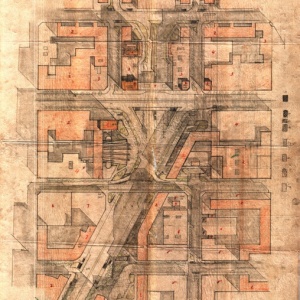Political death
Le Corbusier’s inheritors in Uruguay.
DOI:
https://doi.org/10.35305/23626097v5i8.104Keywords:
Le Corbusier’s epigones, politics and urbanism, teaching of architectureAbstract
This article stems from the doctoral thesis Tres visitantes en París. Los colaboradores uruguayos de Le Corbusier; it was introduced in Madrid in 2013 and published in Montevideo in 2015. It is argued that Le Corbusier’s heritage was developed in Uruguay with an almost accidental series of events as its starting point. There was a shift from a theory based on the Beaux Arts tradition enriched by German contributions -especially to the field of urban planning- which prevailed until at least the 1940s in the post-war period to the dogmatic adaptation of the CIAM grille in which each one of the leading representatives gave raise to his own version. Everything was closed down by military authorities in 1973.
The account begins in 1951 with the Sephardic Synagogue commission in Ciudad Vieja, Montevideo, where all the Uruguayan collaborators of Le Corbusier joined efforts. This was the first and perhaps the only occasion in which they worked together. Their project has been discovered in 2013 after the presentation of the thesis.
Downloads
Metrics

Downloads
Published
How to Cite
Issue
Section
License
Open access policy
A&P Continuidad is a non-profit and open access publication. According to Mexico Declaration on Cultural Policies, the journal distribution is submitted to Creative Commons Attribution-Noncommercial-ShareAlike 4.0 International Public License (CC BY-NC-SA). “Neither the commercial use of the original work nor that of the possible derivative works are allowed. The distribution of derivative works should be submitted to the license regulating the original work. This license is not free.”
A&P Continuidad authorizes the partial or full reproduction of texts and graphs provided that the source is cited. Authors are exclusively responsible for the criteria expressed in the articles which do not necessarily reflect the opinion of the Editorial Committee or that of the Direction Board. The copyright of the published articles pertains to their authors or publishers.
Transfer of rights
The acceptance of an article to be published implies the author’s transfer of rights to the journal. Authors continue to have the right to use the material in future books or publications, approve or veto the republication of their works as well as the rights related to patents or other rights. Transfer of rights form may be downloaded here.























 This OJS site and its metadata are under a
This OJS site and its metadata are under a 

